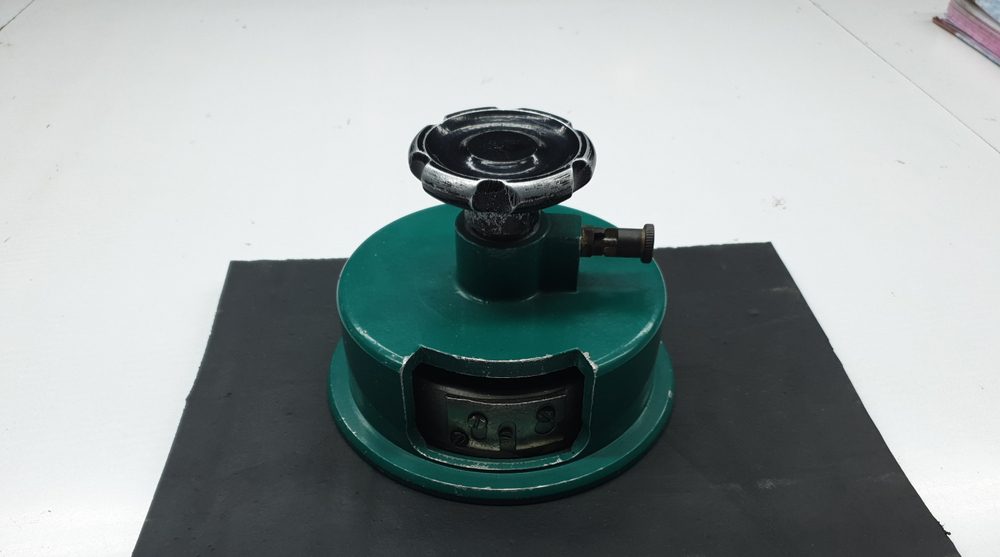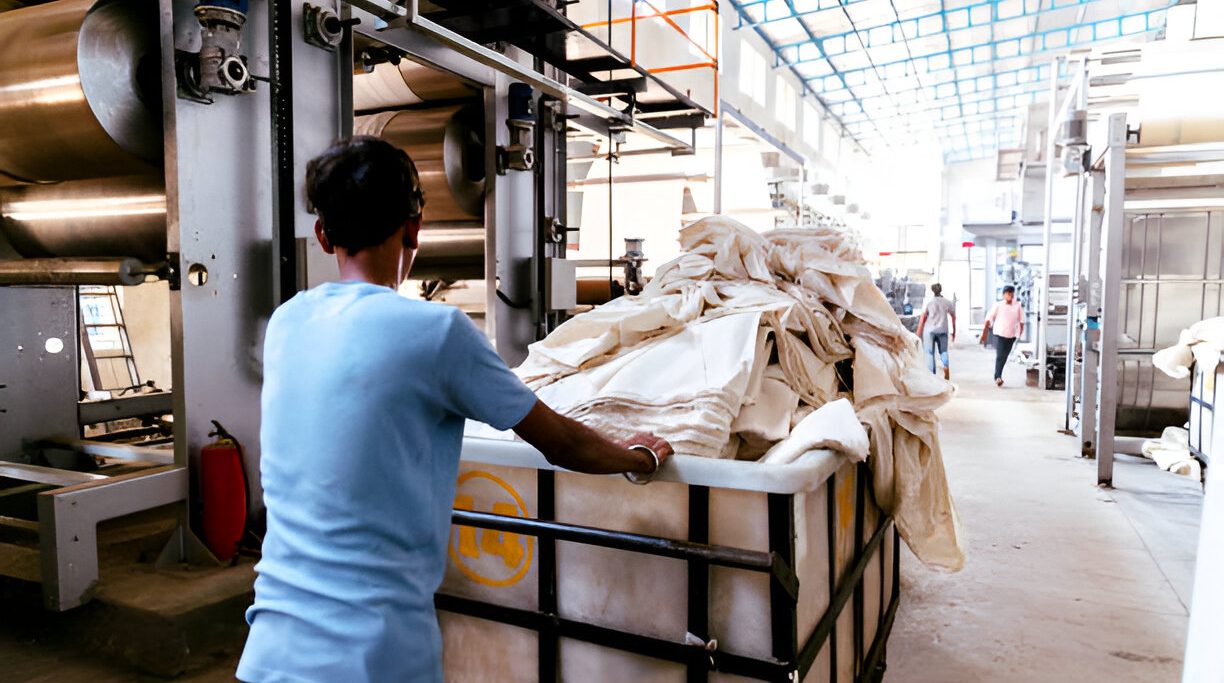In the context of clothing, GSM refers to the fabric’s weight and is a crucial factor in assessing the fabric’s general quality and suitability for various uses. A denser and thicker fabric, which can offer superior durability, drape, and insulation, is typically indicated by a higher GSM. Although GSM alone cannot assess a textile’s quality, it is frequently employed as a criterion, with higher GSM materials typically being linked with higher quality. In order to choose the optimum fabric for the intended use, it is crucial to take the GSM into account when choosing fabrics for various applications. Other elements to take into account include the fibre composition, weave, and finish.
Introduction to textile GSM and its meaning
In the textile industry, the word “GSM” (Grams per Square Meter) is frequently used to characterise a fabric’s weight. It speaks of the fabric’s weight expressed in grams per square metre of surface. Having a GSM of 100, for instance, indicates that a square metre of that cloth weighs 100 grammes.
GSM is a crucial consideration when choosing a fabric for a specific application because it can reveal the density and thickness of the material. A fabric’s performance can be impacted by its weight in a variety of ways. A heavier weight fabric might be more insulating and durable, whereas a lighter weight fabric might be more breathable and more comfortable to wear.
Depending on the intended purpose, a fabric’s GSM can range in the textile business from very lightweight (less than 50 GSM) to very heavy (more than 700 GSM). For instance, lighter materials with a lower GSM are often used for summer clothes, whereas heavier materials with a higher GSM are typically used for winter clothing, upholstery, and other uses where durability is crucial.
It’s important to remember that there are other considerations besides a fabric’s GSM when selecting a textile product. The performance and usability of the fabric for a given application can also be influenced by other elements including the fibre composition, weave, finish, and construction.
How is GSM measured in textiles
The following procedures are involved in determining a fabric’s GSM:
- Cut a sample: From a bigger piece of fabric, a smaller, more precise sample is taken.
- Weigh the sample: A precise and accurate digital balance is used to weigh the sample. Weight is specified grams.
- Calculate the area: A precise tool, such as a digital calliper, is used to measure the sample’s area. Square metres are used to measure the area.
- Derive the GSM: Compute the GSM by dividing the sample’s weight (in grammes) by its surface area (in square metres).
Once the GSM has been computed, it can be used as a benchmark for contrasting various fabrics or deciding whether a specific fabric is appropriate for a given purpose.
The GSM of a cloth can be measured using a variety of methods. They include a digital balance, a digital calliper or other tool for measuring area, and a calculator or application for creating spreadsheets to conduct the computations.
It is significant to remember that a fabric’s GSM can change depending on elements including its weave, fibre composition, and finish. To ensure accuracy, it is advised to establish an average GSM after taking repeated measurements from various points on the fabric.
Relationship between GSM and fabric weight:
The weight and thickness of a cloth have a direct impact on its GSM value. Fabrics with greater GSM values are often thicker and heavier than fabrics with lower GSM values. The GSM and cloth weight have a linear relationship. A cloth with a GSM of 100, for instance, weighs twice as much as one with a GSM of 50. In a similar vein, a fabric with a GSM of 200 weighs twice as much as one with a GSM of 100.
It is significant to notice that there is not always an obvious correlation between GSM and cloth weight and thickness. For the same GSM value, different fibre kinds and fabric structures can cause variances in fabric weight and thickness. For instance, a fabric made of cotton with a GSM of 100 can be lighter and thinner than a fabric made of polyester with the same GSM.
Quality and durability
Although a fabric’s GSM number might serve as a guide to its quality and toughness, it is not the sole factor that affects these qualities. The density, thickness, and tightness of fabrics with greater GSM values tend to make them more long-lasting and durable than fabrics with lower GSM values. For some purposes, a fabric’s more opulent or high-end feel can be preferred, which is indicated by higher GSM levels.
While evaluating the functionality and quality of a fabric, it is crucial to take other aspects into account. For instance, a fabric’s durability and function may be significantly impacted by the amount of fibre it contains. Compared to synthetic fibres like polyester and nylon, natural fibres like cotton, silk, and wool are typically more breathable, cosy, and long-lasting. A fabric’s performance and durability may also be impacted by the weave, such as satin, twill, or plain. A fabric’s performance and durability can also be impacted by finishing methods including dyeing, printing, and coating. Besides these aspects, a fabric’s intended application must also be taken into account when evaluating its strength and durability. A fabric that is intended for frequent use, such as upholstery or outdoor applications, needs to be more resilient than a fabric intended for occasional usage, like a dress or scarf.
In conclusion, while a fabric’s GSM number can provide some details about its quality and durability, other elements like the fibre content, weave, and intended application should also be taken into account. It is feasible to choose a fabric that will function well and satisfy the requirements of a specific application by taking into account all of these elements at once.
Considerations for End Use
The appropriateness of a fabric for various purposes can be significantly influenced by its GSM value. Following are some instances of how different GSM levels can impact a fabric’s suitability for different end uses:
Clothing: The drape, softness, and breathability of a fabric can be influenced by its GSM value in clothes. Whereas heavier weight materials with higher GSM values, like denim or wool, are utilised for jackets, pants, and skirts, lighter weight fabrics with lower GSM values, like chiffon or organza, are frequently used for flowy dresses or blouses.
Upholstery: A higher GSM rating may be preferable for upholstery since it denotes a thicker, more robust fabric that can endure wear and tear. Upholstery and other heavy-
duty applications frequently employ fabrics with higher GSM counts, including canvas or twill.
Bedding: The warmth and softness of a fabric in bedding can be influenced by its GSM value. Winter bedding frequently uses heavier weight textiles with higher GSM values like flannel or fleece, whereas summer bedding frequently uses lighter weight fabrics with lower GSM values like percale or sateen.
Bags & Accessories: The strength and durability of a fabric for bags and accessories can be influenced by its GSM value. Whereas lighter weight textiles with lower GSM values, like silk or satin, are used for accessories like scarves and neck ties, heavier weight materials with higher GSM values, like canvas or leather, are frequently used for
bags and luggage.
- Home decor: A fabric’s usefulness for different applications in home decor can be influenced by the GSM value of the material. Lighter weight fabrics with lower GSM values, like cotton or linen, are used for table linens or throw pillows, whereas heavier weight fabrics with higher GSM values, like jacquard or chenille, are frequently used for draperies or upholstery.
Some typical GSM values for various types of fabrics
- 120–200 GSM for cotton jersey. T-shirts and other casual apparel frequently include this medium weight, soft, stretchy fabric.
- 30-70 GSM for chiffon. Chiffon is a sheer, light-weight material that has a floating, delicate feel and is frequently used for dresses and blouses.
- 200–400 GSM for denim. This fabric is frequently used for jeans, jackets, and other workwear because it is strong, long-lasting, and has a sturdy feel. ● 160-200 GSM for flannel. This soft, fuzzy fabric with a medium to heavy weight is frequently used for pyjamas and winter bedding.
- Silk: 5–60 GSM. This is a lightweight, opulent material that feels silky and soft and is frequently used for dresses, blouses, and shawls.
- 250-600 GSM for upholstery fabrics. These fabrics are frequently thick and tightly woven, offering toughness and longevity for furniture and other demanding applications.
The density, thickness, and tightness of fabrics with greater GSM values tend to make them more long-lasting and durable than fabrics with lower GSM values. A cloth with a higher GSM value may also feel more opulent or high-end. When analysing the performance and feel of a fabric, it’s crucial to take into account additional elements like the fibre composition, weaving, and finishing.
Regulations and industry standards
To guarantee that textiles fulfil specific quality and safety standards, there are many laws and industry norms pertaining to textile GSM. A few of these are: ● A common test procedure for determining the GSM of woven materials is ASTM D3776. To calculate the fabric’s GSM, a fabric swatch of a particular size is cut out and weighed.
- An international standard for calculating the GSM of textile materials is ISO 3801. The standard offers instructions on how to gauge and compute the GSM of various materials.
- European Union textile laws: The labelling and testing of textile items are just two of the many laws the European Union has in place for textile goods.
- Regulations of the Consumer Product Safety Commission (CPSC): A U.S. government organisation called the CPSC is in charge of policing a range of consumer goods, including textiles. The organisation has rules for the testing and labelling of textile items, including rules for GSM.
- Industry-specific standards: There are unique standards for textile GSM in a number of different industries. For instance, the medical sector has special standards connected to the GSM of textiles used in medical items, whereas the automotive sector has specific regulations linked to the GSM of textiles used in automobile interiors.
By adhering to these rules and specifications, textiles can be made to be safe, of high quality, and suitable for a variety of uses and industries.
As a result, the idea of textile GSM is crucial to the process of making fabrics since it establishes a fabric’s weight, thickness, quality, and durability. It is a crucial consideration for choosing the right fabric for many uses, including clothes, bedding,
furniture, and medical items. A fabric’s GSM rating sheds light on its physical characteristics, such as density, strength, and feel. While evaluating the performance and feel of a fabric, it is essential to take other aspects into account, such as the fibre composition, weave, and finishing. To guarantee the security further and calibre of textile products, compliance with laws and industry norms relating to textile GSM is required.
Do you have questions about the most suitable GSM for your product requirements? We at Cotton Monk understand the importance GSM plays in the textile industry and our line of experts are well-equipped to understand your requirements and make apt suggestions. For more information: [email protected]



